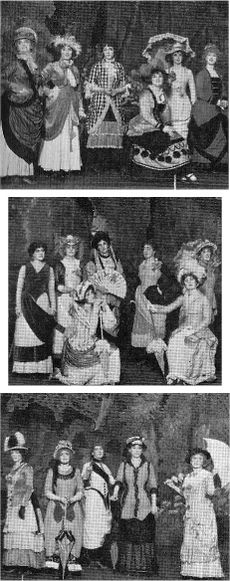Hugo Rumbold facts for kids
Hugo Cecil Levinge Rumbold (born February 7, 1884 – died November 19, 1932) was a talented English designer. He created amazing scenery and costumes for plays and operas. Famous people like Sir Herbert Tree, Sir Thomas Beecham, Arthur Bourchier, and Rupert D'Oyly Carte asked him to design for their shows.
Contents
Early Life and Career
Hugo Rumbold was born in Stockholm, Sweden. His father, Sir Horace Rumbold, was a diplomat, which means he worked for his country in other nations.
Hugo went to Eton, a well-known school, in 1897. He joined the army in 1901 and served in South Africa during the Second Boer War. He was promoted to lieutenant in 1902. Later, he also fought in the First World War with the Grenadier Guards. He was injured during the war and received an award called the Order of the Crown (Belgium). In his everyday life, people sometimes called him Captain H. C. L. Rumbold because of his military rank.
Designing for the Stage
As a stage designer, Hugo Rumbold's job was to create the look and feel of a play or opera. This included designing the backgrounds (sets) and the clothes (costumes) for the actors.
One of his early projects was for William Faversham's play Romeo and Juliet in 1913. He designed sets and costumes that looked like old paintings. The next year, he created Tudor-style designs for Bluff King Hal. Critics loved his work, saying his costumes and scenes were "splendid and beautiful."
In the years that followed, Rumbold designed for many important shows. He worked on The Right to Kill for Sir Herbert Tree. He also designed for Charles Villiers Stanford's opera The Critic in 1916. The Times newspaper said that Rumbold seemed to carry the "18th century atmosphere about in his pocket" because his designs were so perfect for the time period. He also designed L'Apres Midi d'un Faune in 1916.
Rupert D'Oyly Carte, who ran a famous opera company, asked Rumbold to design costumes for a 1918 show of Patience. Some of Rumbold's costumes for the young girls in Patience were used by the D'Oyly Carte Opera Company for many years.
He also designed for Sir Thomas Beecham, creating new looks for operas like La fille de Madame Angot and Mozart's Le Nozze di Figaro in 1919. That same year, he designed the first British show of Ravel's L'heure espagnole. Rumbold also designed for Bernard Shaw's play Arms and the Man in 1919 and The Tempest in 1921.
Other Creative Work
In 1920, Rumbold tried something different. He became an impresario, which means he organized and managed a show. He produced a new ballet called Le bœuf sur le toit.
Hugo Rumbold was known for being witty and fun. He loved to make people laugh and share his excitement for life. He also worked on film production later in his career. He was someone who enjoyed trying many different creative things.
He also wrote a play called The Human Elephant with Zoe Akins. It was based on a short story by Somerset Maugham.
Personal Life and Passing
Hugo Rumbold was known for his stylish appearance and lively personality. He was friends with famous people like Noël Coward and Charlie Chaplin. Charlie Chaplin even said that Rumbold was the best mimic he had ever seen.
In the last year of his life, Rumbold married the writer Zoe Akins.
Hugo Rumbold passed away in Pasadena, California, in 1932, when he was 48 years old. His death was caused by an illness related to the injuries he received during the First World War. He is buried in San Gabriel Cemetery in San Gabriel, California.
Images for kids


